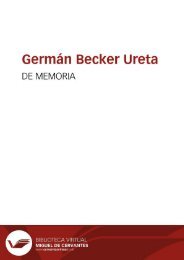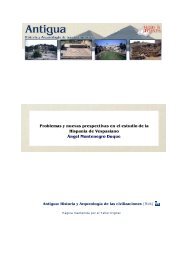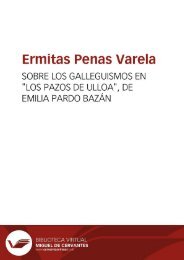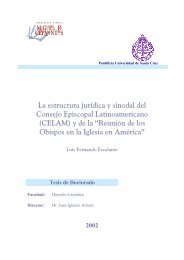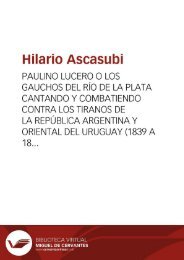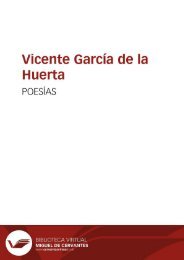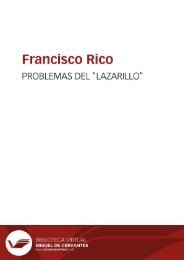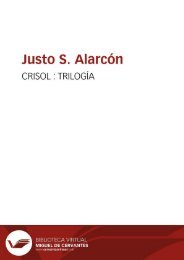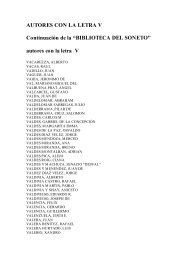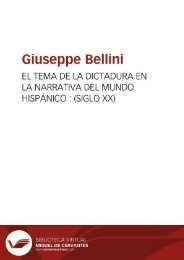Create successful ePaper yourself
Turn your PDF publications into a flip-book with our unique Google optimized e-Paper software.
Anales galdosianos [Publicaciones periódicas]. Año XII, 1977<br />
think of the two men in comparative terms, we can now see that they are, in fact, variations on a single<br />
character configuration that recurs in <strong>Galdós</strong>' work. The structuralistic: resonances of such an insight<br />
can then lead us to group other characters in the novelas contemporáneas as multiple incarnations<br />
of a single actant . 109<br />
When, with his first words, Manso claims « Yo no existo » (9) and shortly thereafter « carezco de<br />
buena barba » (12) 110 , the metaphoric elaboration of his name begins, just as the ramifications of<br />
the word Miau begin their growth in Chapter I of that novel and by the end have branched out into the<br />
entire world of the work, taking on more and more meaning with each new use. Leaving aside, for the<br />
moment, the narrator's relationship to the novel's creator, it is illuminating to note that the character's<br />
novelistic «life» begins when, for the first time, he ceases being a philosopher. He leaves his vida<br />
sosegada ( sosegada = mansa ) for the purpose of attempting a direct and personal impact on society<br />
through his pupil Manuel (= «God with us»). Very shortly, with the arrival of José María Manso<br />
and family from Cuba, the spatial focus of the novel moves to that household, to remain there until<br />
sosiego returns after the marriage of Manuel and Irene. It is typical of <strong>Galdós</strong>' novelistic structures<br />
for the action to begin with the introduction of an agent of change into the central character's life, his<br />
or her true nature being a given which the author tells us about but does not dramatize. The action<br />
of the work then portrays the character struggling to achieve what will be seen as impossible, either<br />
because of his own true nature or that of society -or a combination of the two. We are not shown<br />
109 The term is that of A. J. Greimas in his Sémantique structurale (Paris, 1966) and is discussed in<br />
Frederic Jameson's The Prison-House of Language (Princeton, 1972), pp. 123-129. Although separate<br />
attempts have been made to relate both Máximo and Maximiliano to <strong>Galdós</strong>' personal life (without<br />
seeing a relationship between the two characters) such possibilities would not seem to relate to the<br />
concerns of the present study. (See Walter T. Pattison, « El amigo Manso and El amigo <strong>Galdós</strong> »,<br />
Anales Galdosianos , II, (1967), 135-153, and J. C. Ullman and G. H. Allison, «<strong>Galdós</strong> as Psychiatrist<br />
in Fortunata y Jacinta », Anales Galdosianos , IX, (1974), 7-36.<br />
110 Suggestive evidence that <strong>Galdós</strong> intends this statement to relate to mansedumbre (lack of virility,<br />
vital force) can be found in his El caballero encantado (Chapter 3) when the following words, with a<br />
contrary intent, are said of the father of the Infantes de Lara: « Eso es un hombre, eso es un caballero,<br />
un español de cuerpo entero y con toda la barba ». ( Obras completas , ed. F. C. Sáinz de Robles,<br />
2nd ed. (Madrid: Aguilar, 1951), VI, p. 230). The novelist is, of course, using a traditional symbolism<br />
already prominent in the Poema de mío Cid .<br />
80



